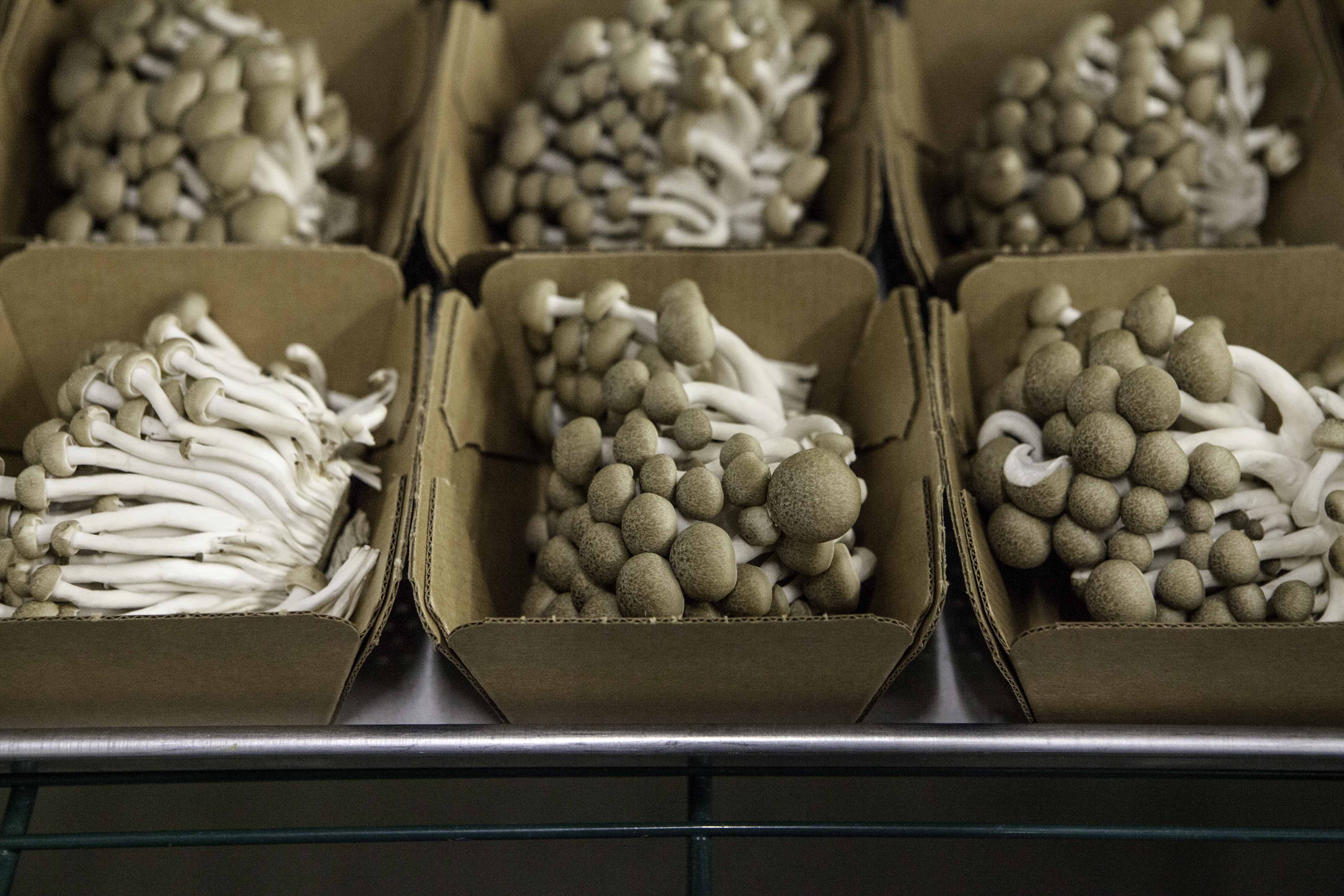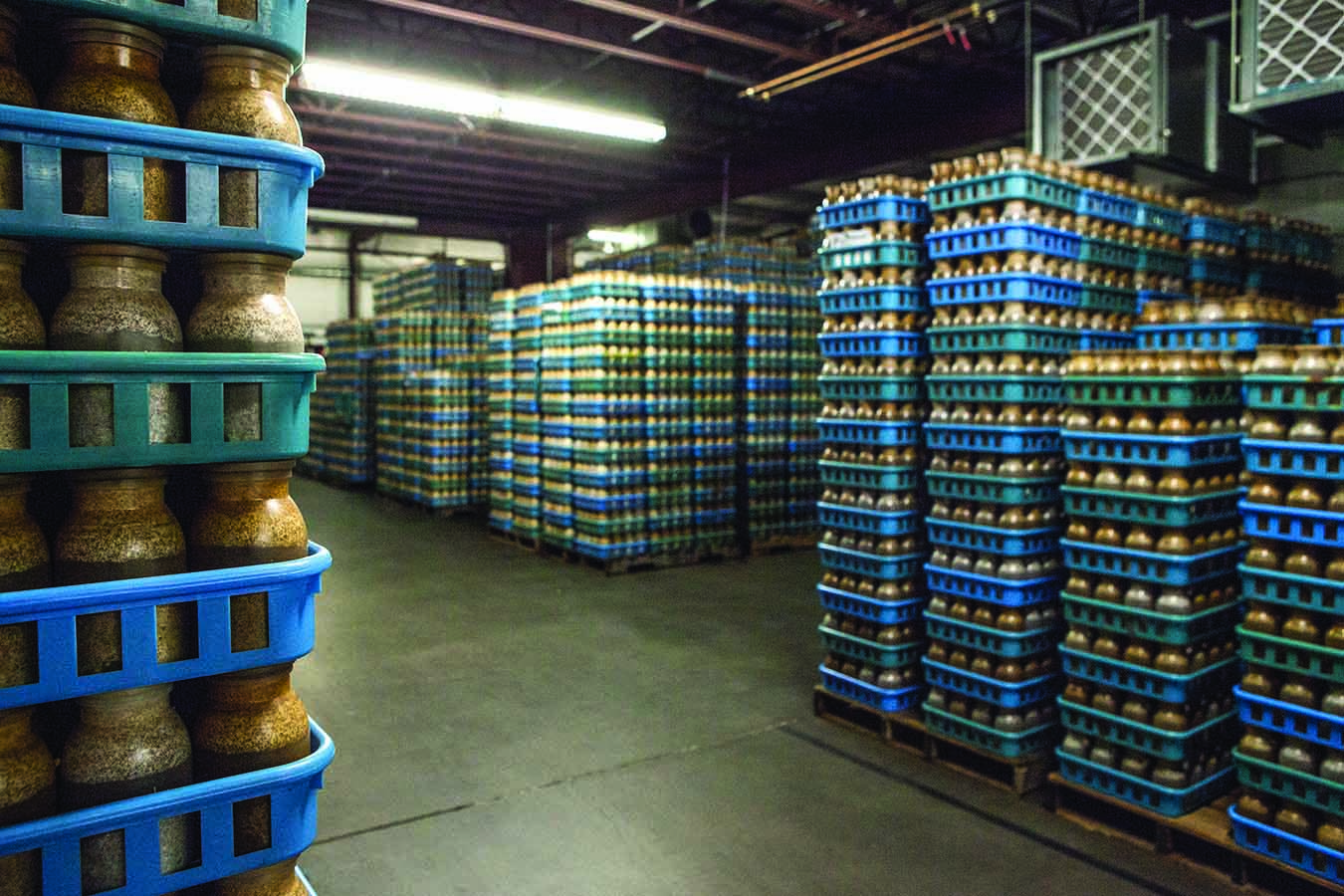In praise of the amazing, indestructible, utterly delicious, hard-working mushroom.
The largest living organism on Earth lies just under the ground in Eastern Oregon. Spanning some 2,200 acres, it is just one cell wall thick. It’s a mushroom.
Further north in the old-growth forests of the Pacific Northwest, the Agarikon mushroom flourishes high up in trees that have stood for 700 years or more. In 65 AD, the Greek physician Dioscorides hailed Agarikon as “the elixir of long life.”
In fact, researchers are increasingly certain that there would be no life at all without mushrooms.
The insistent rise of fungi in Earth’s earliest days broke up the rocks and created the soil that allowed plants to take hold. Once plants began to flourish, fungi decomposed them, forming more soil, creating a rich, composted medium that allowed new plants to grow. Earth became fecund. Ice ages came and went. The dinosaurs rose and vanished. Fungi continued.
Scientists now believe that humans are more closely related to fungi than any other species in the animal kingdom. About 650 million years ago, the organisms that would eventually become our species formed so as to digest nutrients from within a cellular sack that eventually became a stomach. Fungi continued as it had been, consuming its food externally. While we now walk to feed, fungi send filaments underground to find its food.
Those filaments, called mycelium, interconnect underground in a manner so intelligent that they are also known as the “Earth’s Internet.” They resemble the synaptic system of the human body. They mimic the arrangement of dark matter in the universe. They communicate via neurons that can “tell” a plant if an invasive species, bacteria, or virus is present; the plant responds by creating a defense before the invader arrives.
“Did you see the movie Avatar? When they plug into the network, I was like, ‘It’s mycelium! Oh my goodness!’”
Justin Reyes, the manager of marketing and sales for Sebastopol’s Gourmet Mushrooms, Inc. (GMI), is literally standing among the fruits of mycelium’s labors as he exclaims. “It is like that, the mycelium connect so much of the organisms on the planet.”
One of the largest organic specialty mushroom producers in the United States, GMI grows seven varieties of fungi in two West County facilities—one, a former chicken ranch; the other, an industrial facility on property it shares with the Merry Edwards Winery that finished construction in 2003. Last year, GMI launched an additional farm in Michigan to better serve the East Coast. In Sebastopol alone, they grow about 20,000 pounds of specialty mushrooms each week. But that’s nothing compared to white button mushroom farms where, Reyes says, hundreds of thousands of pounds of mycelium fruit are harvested each week.
They resemble the synaptic system of the human body. They mimic the arrangement of dark matter in the universe.
But let’s get back to the synaptic structure. Walk the forest in a place like Salt Point State Park and look at the ground. You’ll see white threads and powder if you lift a clump of pine needles, disturb a piece of fallen bark, or bend down to examine a newly popped mushroom. The white threads and powder-like substances are the mycelium; the mushroom is the fruit. A common metaphor is apples and trees: The mycelium is the tree; the mushroom is the apple. That’s why foragers are careful to cut a mushroom cleanly from the ground, using a knife. You wouldn’t cut down a tree limb to harvest an apple. No more would grow.
Continuing the metaphor, it’s fair to say that on this day, Reyes is showing visitors around a massive cavalcade of apples. GMI uses nearly 1 million glass bottles to grow its mushroom varieties in a sustaining mix called a substrate that utilizes oak shavings, soybean hulls, corncobs, oyster shells, and a few other proprietary materials he can’t discuss. What nature does randomly in wet, warm, shaded glens, GMI does scientifically and in abundance.
The mushroom business in the U.S. is booming, with GMI experiencing an astonishing 20 percent annual growth in sales as consumers become more aware of the nutritional and culinary pleasures of fungi. The ubiquitous white button mushroom, once so miserably served in cans, continues to be the biggest seller in the West. In the East, people have happily been eating more exotic varieties for centuries and indeed, Asian cultures have used fungi for medicinal applications almost as long as humans have suffered illness.
As American palates grow more sophisticated and consumers look for vegetarian alternatives that still offer the rich umami taste of meat, the specialty mushrooms that GMI produce—among them trumpet, nameko, maitake—are increasingly in demand. The taste is deeper and more unique than button mushrooms can provide, the growing substrate cleaner (button mushrooms tend to be farmed on compost, which is why neighbors regularly protest the establishment of any new farms), and the health benefits are greater. Plus, it can feel safer to eat something grown under our own restrictions.
“I won’t eat imported mushrooms,” Reyes says. “You don’t know what they’re grown on. Some mushrooms can bio-accumulate, so you’ve got heavy metals and toxins. Are they grown in China? People are growing them on pallets of old floorboards that might have formaldehyde in them. I won’t eat them and, of course, I don’t need to.”
With just an estimated 15 percent of all fungi on Earth identified, there are countless varieties of mushrooms that won’t grow under cultivation. But of the ones that do, the potential they have for human health are astonishing. Mushrooms breathe oxygen and emit carbon dioxide, just like us. They absorb Vitamin D from the sun just like us. Need more of the stuff? Put a box of mushrooms in the sun for an hour before you cook them and they’ll transmit the Vitamin D for you. They are high in protein, nearly absent of fat and cholesterol, and rich in Vitamin B, and loaded with polysaccharides and minerals.
There’s also increasing scientific evidence that mushrooms are positive influencers of our gut biome, where billions of flora maintain their own kingdom inside our stomachs, determining perhaps everything from our propensity to gain weight to our propensity to schizophrenia.
The great Washington state mycologist Paul Stamets—who is said to now keep a home in Sonoma County—has proposed that mushrooms are also responsible for bee health and that returning the power of mushrooms to bees might be an effective weapon against Colony Collapse Disorder (CCD).
Stamets follows a Winnie the Pooh logic that allows the curious amateur to easily parse. Bears claw at trees. The claw marks make an entry for fungi. Mushrooms can form. Mushrooms help wood to decompose, eventually creating holes in trees. Bees like holes and will nest there. Bears like honey and will claw at trees to get it, thus prompting more claw marks that make an entry for more fungi. Stamets has done research showing that fungi provide important anti-viral components to bees and that bees will actually sip moisture from mycelium if given a chance. He watched them do it in his own garden bed and got to thinking.
Today, Stamets—whom Reyes describes as his main, if friendly, competitor in the mushroom business—has developed a mycohoney solution that apiarists can feed their hives to strengthen their immunity as part of the fight against CCD.
But we needn’t claw at something in the woods in the hopes of one day prompting a mushroom to form. At GMI, the process is streamlined and intended to mimic nature with less haphazard results.
Sterilized bottles are filled with the wood-based substrate, pegged with a hole, and inoculated with one of the seven varieties of mycelium they produce. The mycelium grow from the top down and bottom up and until they meet. Featuring a narrow mouth for the oxygen the mushrooms require, the bottle prompts the fruit to reach upward, eventually blooming out of its mouth like a bouquet.
Different varieties spend time in different rooms, according to their needs. Some rooms are chilled and lit to approximate fall and winter; others, the late warmth of spring to early summer. All varieties are grown and harvested seven days a week all year round, Reyes and his management
team having to stagger the product’s harvest dates to allow the 80-plus workers they have onsite to be able to take a full day off for Thanksgiving and Christmas.
Once mature, the mushrooms are cut cleanly from the top of the bottles, packed in cardboard boxes, and mostly flown out to chefs and restaurants around the U.S. The bottles are sterilized for re-use. The foot of the plant is either sold for animal food—Reyes is working with Duskie Estes and John Stewart of Zazu to see if their pigs like it enough to make it a regular meal—or returned to a compost. The substrate is composted, too. In addition to its seven culinary varieties, GMI also grows some 30 types of mushrooms on a rice, not wood, substrate for nutraceutical use.
“Those are mushrooms that have some kind of health or medicinal benefits,” Reyes says, citing turkey tail and reishi varieties among them. “We sell to supplement companies who sell to the end consumer. There’s tons of literature about the health benefits of mushrooms. As humans, we’ve been eating mushrooms longer than we’ve been eating meat.”
And we’ve perhaps only just started to understand what they can do for us other than feed us. Stamets has led the investigation into using mushrooms for mycoremediation, as after the 2007 Cosco Busan oil spill in the San Francisco bay during which 53,000 gallons of oil were dumped into that fragile ecosystem.
We know so little about the kingdom of fungi. Justin Reyes
Stamets used hair mats inoculated with oyster mushrooms to prove that this is one way to clean up a petroleum disaster. The mats absorbed the oil from which mushrooms grew and decayed releasing worms and grubs that attracted birds which in turn dropped seeds onto the mats where plants eventually flourished.
Mushrooms are also being used to “grow” Styrofoam—or rather, a natural Styrofoam replacement—as well as home furniture, a new kind of particle board, and the material used for yoga mats. They’re truly magical, and we’re not even checking psilocybin.
“We know so little about the kingdom of fungi,” Reyes says with interest and satisfaction, looking around at the infinitesimal kingdom that GMI maintains.
Article Resources:
Gourmets Mushroom, Inc.: mycopia.com
Paul Stamets’ Fungi Perfecti: fungi.com


